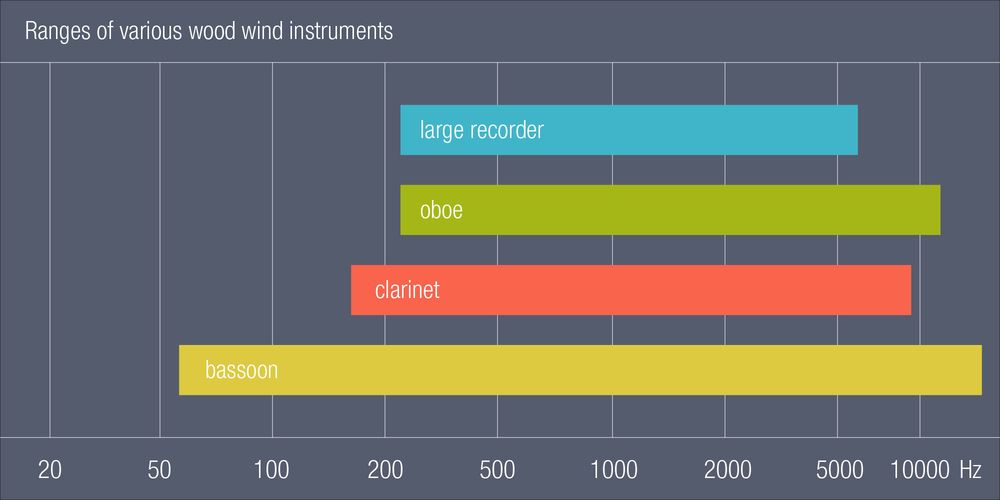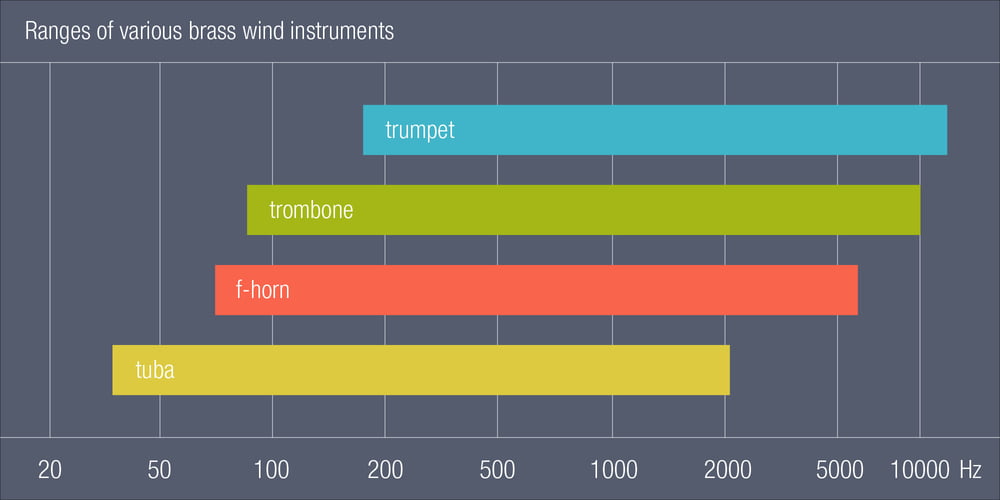2. Frequency ranges
A little experiment before we start:
What do you think: which of these instruments possesses the greatest frequency range, i.e. fundamental frequency plus overtones?
- the bassoon,
- the oboe (which we will not discuss in detail herein)
- or a large recorder?
You'll have figured it our I'm sure: it's the bassoon!
We are talking about a woodwind instruments with a frequency range that begins at about 60Hz with overtones that extend to far beyond 10,000Hz!
So let's have a look at the different instruments' frequency ranges:

The ranges of various wood wind instruments

The ranges of various brass wind instruments
In addition, every instrument (and voices, too) features formants, i.e. parts in the range where acoustic power is concentrated (resonances).
These occur due to the dimensions, materials and construction of the instruments' bodies, and they can also play a part in the decision which mic to choose.
A further feature is that wood wind instruments - in comparison to their brass counterparts - create a lot of inherent noise (embouchure, keys, air flow).
And to make it properly complicated, there's also the fact that some instruments feature frequency-dependent sound radiation patterns. This is why there's another crucial point:
Microphone position
Many sound engineers actually believe that the mic position is of prime importance when recording wood wind instruments, more important even that the choice of the mic type!
In summary, we can say that we need to be mindful of the following, particularly in view of the wide variety of wood wind instruments available:
- which instrument we want to record
- where the recording will happen and what the features of the space ar (acoustics, live - studio)
- what the intended use of the recording is (soloist, orchestra, style)
In the following I will discuss the characteristics of the individual instruments and consider them in live and studio recording.




